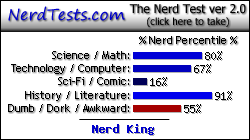The Hosts file contains the mappings of IP addresses to host names. This file is loaded into memory (cache) at startup, then Windows checks the Hosts file before it queries any DNS servers, which enables it to override addresses in the DNS. This prevents access to the listed sites by redirecting any connection attempts back to the local (your) machine. Another feature of the HOSTS file is its ability to block other applications from connecting to the Internet, providing the entry exists.
You can use a HOSTS file to block ads, banners, 3rd party Cookies, 3rd party page counters, web bugs, and even most hijackers. This is accomplished by blocking the connection(s) that supplies these little gems.
Example - the following entry 127.0.0.1 ad.doubleclick.net blocks all files supplied by that DoubleClick Server to the web page you are viewing. This also prevents the server from tracking your movements. Why? ... because in certain cases "Ad Servers" like Doubleclick (and many others) will try silently to open a separate connection on the webpage you are viewing, record your movements then yes ... follow you to additional sites you may visit.
In many cases using a well designed HOSTS file can speed the loading of web pages by not having to wait for these ads, annoying banners, hit counters, etc. to load. This also helps to protect your Privacy and Security by blocking sites that may track your viewing habits, also known as "click-thru tracking" or Data Miners. Simply using a HOSTS file is not a cure-all against all the dangers on the Internet, but it does provide another very effective "Layer of Protection".
For Windows XP SP2 users you should see a Security Center prompt about allowing this connection. [screenshot]
Simply click No and continue. Yes the prompts can be annoying but at least you'll know, however you should not see these prompts if these entries are included in the HOSTS file.
Note: this prompt only occurs if (example) *.doubleclick.net is included in the "Restricted Zone".
...| Windows 7/Vista/XP | = | C:\WINDOWS\SYSTEM32\DRIVERS\ETC | ||
| Windows 2K | = | C:\WINNT\SYSTEM32\DRIVERS\ETC |
Reset the DNS Client with a simple batch file (submitted by: Ronny Ong - 2K/XP only)
DnsManual.bat (resets the DNS Client to Manual) [right-click and select: Save Target As]
DnsDisabled.bat (resets the DNS Client to Disabled) [right-click and select: Save Target As]
To use: double-click on the downloaded file and reboot that's it ...
For all other Questions, Issues and Solutions - see: The HOSTS File FAQ
For detailed Download and Extract Instructions - see: Download Help
How To Uninstall the MVPS HOSTS file
| HostsMan is a freeware application that lets you manage your Hosts file. Includes an option to turn off the unneeded DNS Client Service. This also has an option to update the existing HOSTS file when needed. Important! - make sure you select: Default action - Overwrite Use the Server option to replace the Action Cancelled message. Windows Vista users ... once installed right-click on "hm.exe" and select: Properties Click the Compatibility tab and select: "Run as Administrator" [screenshot] This step was resolved in 3.2.71 Beta7. Win7 users see their documentation for more info. | |
| Rename the HOSTS file on the fly ... a simple one click batch file. (Win9x/XP/Vista/Win7) | |
| | HostsXpert is a terrific multi-function Hosts File Manager [screenshot] Note: no install required, it runs from anywhere ... You will need to turn off the DNS Client service manually [info here]When updating the HOSTS file make sure to use the Replace option, rather than Merge Homer is a LocalHost webserver used to replace the Action Cancelled message. Download a custom image for use in Homer. Simply save (Save Target As) blocked.gif (2 kb) to the "\Homer\Homer\images\" folder. |



 LibreOffice
LibreOffice Firefox
Firefox
No comments:
Post a Comment